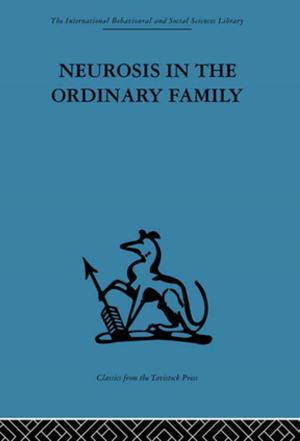Rorschach Assessment of the Personality Disorders
Nonfiction, Health & Well Being, Psychology, Forensic Psychology, Personality, Mental Health| Author: | ISBN: | 9781135617974 | |
| Publisher: | Taylor and Francis | Publication: | April 21, 2006 |
| Imprint: | Routledge | Language: | English |
| Author: | |
| ISBN: | 9781135617974 |
| Publisher: | Taylor and Francis |
| Publication: | April 21, 2006 |
| Imprint: | Routledge |
| Language: | English |
For decades, The Rorschach Inkblot Method (RIM)--the most popular of the projective tests--has been routinely employed for personality assessment and treatment planning. But in recent years, it has not been free from controversy. Criticisms of its validity and empirical support are catalyzing new efforts to strengthen its foundations and document its broad utility. Among the most common--yet also most confusing and challenging--categories of clinical disorders is the personality disorders. However, minimal data have been available on the RIM evaluation of most of those found in DSM-IV. This welcomed book constitutes the first research-grounded, comprehensive guide to the use of the RIM in assessing personality disorders.
The first section offers a theoretical overview of personality disorders and constructs a framework and compelling rationale for the legitimate role of the RIM in their assessment. The second, third, and fourth sections present Cluster A disorders--paranoid, schizoid, and schizotypal; Cluster B disorders--antisocial and psychopathic, borderline, histrionic, and narcissistic; and Cluster C disorders--avoidant, dependent, and obsessive-compulsive. The fifth section presents passive aggressive and depressive personality disorders, currently being proposed for DSM inclusion. Each chapter in these four sections includes an extensive description of the disorder, a review of empirical studies of the use of the RIM to assess it, an analysis of the Rorschach variables that may characterize patients diagnosed with it, and a depiction of a real case and discussion of the ways in which the RIM contributed to its formulation. The sixth and final section explores the relationship between psychoanalytic theory and the RIM.
Rorschach Assessment of the Personality Disorders brings practical help for clinicians and clinicians-in-training, and suggests new paths for researchers seeking to advance our understanding of the complexities of these disorders.
For decades, The Rorschach Inkblot Method (RIM)--the most popular of the projective tests--has been routinely employed for personality assessment and treatment planning. But in recent years, it has not been free from controversy. Criticisms of its validity and empirical support are catalyzing new efforts to strengthen its foundations and document its broad utility. Among the most common--yet also most confusing and challenging--categories of clinical disorders is the personality disorders. However, minimal data have been available on the RIM evaluation of most of those found in DSM-IV. This welcomed book constitutes the first research-grounded, comprehensive guide to the use of the RIM in assessing personality disorders.
The first section offers a theoretical overview of personality disorders and constructs a framework and compelling rationale for the legitimate role of the RIM in their assessment. The second, third, and fourth sections present Cluster A disorders--paranoid, schizoid, and schizotypal; Cluster B disorders--antisocial and psychopathic, borderline, histrionic, and narcissistic; and Cluster C disorders--avoidant, dependent, and obsessive-compulsive. The fifth section presents passive aggressive and depressive personality disorders, currently being proposed for DSM inclusion. Each chapter in these four sections includes an extensive description of the disorder, a review of empirical studies of the use of the RIM to assess it, an analysis of the Rorschach variables that may characterize patients diagnosed with it, and a depiction of a real case and discussion of the ways in which the RIM contributed to its formulation. The sixth and final section explores the relationship between psychoanalytic theory and the RIM.
Rorschach Assessment of the Personality Disorders brings practical help for clinicians and clinicians-in-training, and suggests new paths for researchers seeking to advance our understanding of the complexities of these disorders.















